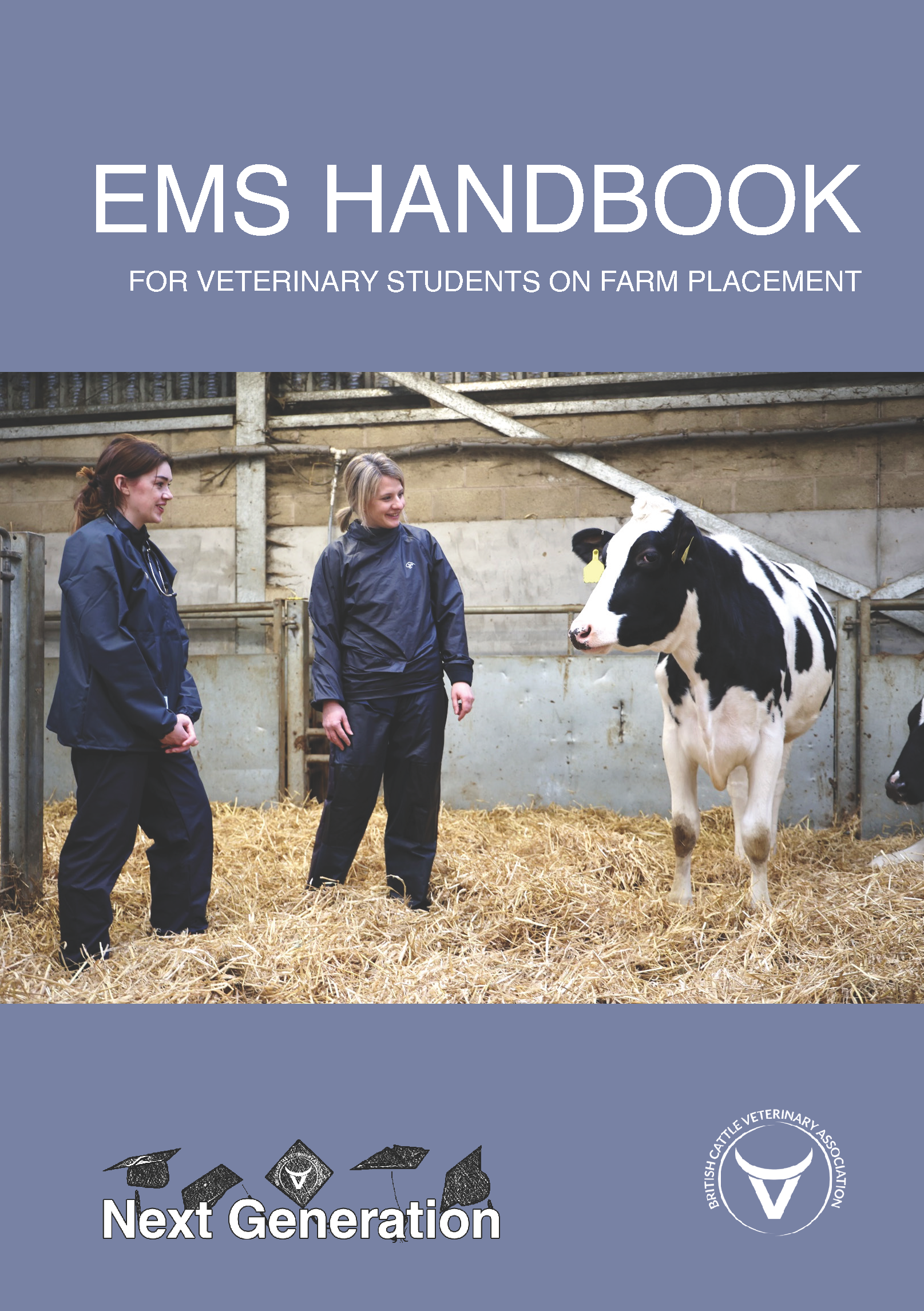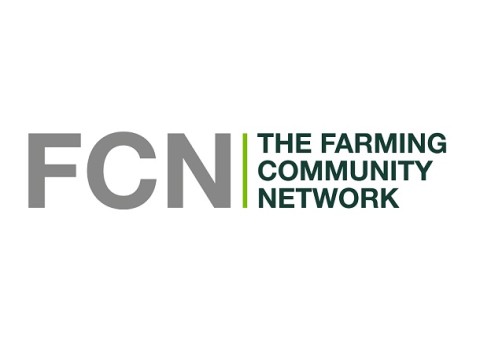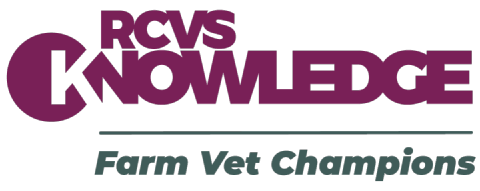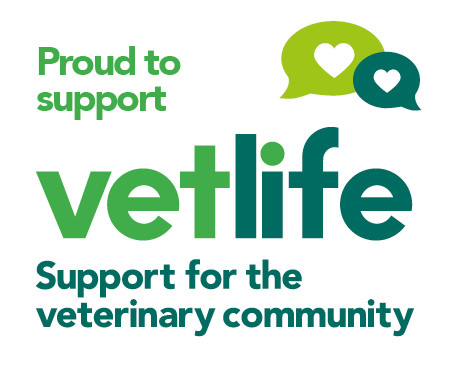BCVA EMS Handbook
BCVA has collaborated with students, universities, and practices to produce a handbook to help veterinary practices support their EMS students. This is an editable resource that you can download and make your own to suit your practice. Click on the image below for the amendable version. If you would like to look at the original version you can download it HERE.
Maximising the Benefits of Farm EMS
BCVA Board has ongoing conversations about a vision for farm EMS with colleagues across the profession, on farm, in practices and with other veterinary associations, including the team at BVA.
This material is intended as a useful guide for more of those conversations – to make sure that the future of the profession is supported and the profession itself thrives thanks to positive early experiences on farm.
- WHERE WE ARE
- CURRENT PROS & CONS
- EXPECTATIONS & PLANNING – FOR PROVIDERS, STUDENTS & VET SCHOOLS
- SUMMARY OF AIMS
- PDF VERSION
WHERE WE ARE – THE CURRENT SITUATION
- RCVS have reduced the minimum time spent to 10 weeks AHEMS and 20 weeks clinical EMS to begin in 2024
- RCVS do not specify how much of each area of EMS must be completed. Some vet schools (not all) do give requirements
- The number of vet schools and students is increasing; the pressure on both providers and students is therefore also increasing
- The providers of EMS and AHEMS are voluntary
- The vet schools have no formal jurisdiction over the providers of EMS
BCVA VIEW: Extra Mural Studies is an opportunity for students to have hands-on experience in the veterinary profession they are about to be a part of. This experience will augment the curriculum taught at vet schools.
The student should be able to choose which type of EMS is most suitable for them, along with guidance and support from the vet school.
The main aim of EMS is to enable students to gain practical experience in as many aspects of veterinary work as possible, build proficiency, and obtain first-hand experience which will help them to develop as professionals. As per RVCS guidance (see SUMMARY OF AIMS), there are specific skills towards which the student should be working.
EMS placements: the student, the practice/provider and the vet school. All these parties should attempt, wherever possible, to appreciate each other’s role in the process.
CURRENT PROS AND CONS
|
|
BENEFITS | DRAWBACKS |
| STUDENT |
Augments vet school curriculum with hands-on experience. Exposes student to “real-world” situation and allows them to see how they are handled. Exposes students to real clients, enabling them to learn how to communicate, sometimes in challenging situations. Allows students to be surrounded by a team and see, first-hand, how a veterinary business is run. Allows students to achieve the 10 specific aims according to the RCVS (see SUMMARY OF AIMS). Gives an insight into potential future employment options. |
Cost – travel, accommodation. Accessibility to different areas, especially if not able to drive or no access to a car. Reduces the time available to be in part time employment to earn extra money. The possible feeling of perceived power imbalance between the provider and the student, resulting in the student feeling unable to make a challenge or complaint if treated unfairly. Lack of available places and therefore the need to book very far in advance. |
| PROVIDER |
Gives practitioners the opportunity to ‘give back’ to the profession and provide for students the kind of invaluable experience that was provided for them. Provides satisfaction for provider when students improve and develop certain skills during the placement. Keeps the practice connected to what is happening in the ever-changing environment of university life, curriculum etc. Talent spotting - gives an insight into potential future workforce. |
The expectation that time must be given to a student despite possible unexpected commercial pressures that are imposed on business during that placement. Resources required to ensure the student is kept safe and provided for. Staff time spent organising student placements and a range of required experiences. Lack of commercial incentive or financial reward for the extra time and resources required to support the placement. The ever-increasing number of students attending vet school, therefore increasing demand and expectation for EMS placements. |
| VET SCHOOL | Gives students an experience which is almost impossible for the vet school to provide. |
Lack of jurisdiction over the provider due to the informal nature of the arrangement. Lack of funding to give providers financial incentive or reward. Lack of authority to provide structure or guidelines for provider. |
EXPECTATIONS & PLANNING – FOR PROVIDERS, STUDENTS & VET SCHOOLS
THE PROVIDER
- Be truly prepared to teach and support students during their placement whilst knowing it is wholly voluntary.
- Have an appointed person who is contact between the provider, the student and the vet school.
- Ensure clear communication with the student before the placement on expectations, start times, equipment required etc.
- Be honest with students regarding minimum requirements to complete the placement e.g., if the practice is rural and the student will require transport and/or accommodation which can’t be supplied by the provider.
- Take note of and make relevant members of the team aware in advance of the student’s outcomes aims, whilst knowing that it may not be possible to provide all experiences.
- Treat the student fairly, giving every opportunity to ask questions, join in debates, attend clinical meetings, practise skills on their outcomes list.
- Keep the student safe on farm by following all best practice.
- Expect a minimal level of knowledge according to the vet schools’ curriculum which should be communicated to the provider in advance.
- Be prepared to spend some time giving thoughtful feedback on the student in the knowledge that the vet school will use this feedback to help further develop the student.
- Be prepared to receive both positive and constructive feedback from both vet school and student.
THE STUDENT
- Be aware that the placement that is provided is done on an entirely voluntary basis.
- Expect to be treated with respect and to respect those around you, especially when in the presence of clients.
- Be ready to ask questions - use the journeys between calls to do this; the more interested you are in the subject, the more the provider is likely to want to help and teach you.
- Create a realistic set of outcome aims and be prepared to discuss this during your placement.
- Be prepared to be asked questions and be challenged on clinical cases and to research the area if you are unsure of the answers. You don’t have to know all the answers, just show you are keen to learn.
- Be aware that not all desired experiences can be catered for as caseload will determine some of these outcomes. Know that the provider will be trying to keep you engaged whilst also providing a commercial service to their clients.
- Be punctual and prepared for the placement, bringing the correct equipment and appropriate PPE.
- Remember that EMS is about experiencing life as a vet. There is a lot of learning to be done by being on farm, during a TB test for example - animal handling, learning to operate a crush, learn about interactions between staff, teamwork. Don’t dismiss any opportunity.
- Be ready to work as a team - this could include carrying out worm egg counts, running scour snap tests, making a round of tea/coffee; offering to help with paperwork … all of these are real-life learning experiences which should not be underestimated.
- Be ready to discuss feedback with provider and vet school to ensure that you get the most out of your placement; also, be ready to give feedback to the provider - both positive and constructive.
THE VET SCHOOL
- Communicate with other vet schools to create a universal approach to managing EMS.
- Supply providers with basic information regarding the level of knowledge that students should have at different stages of their education in order to manage the provider’s expectations.
- Support the student in the lead up to their placement to develop their outcomes and manage their expectations on how many will realistically be achieved in a real-life, commercial environment.
- Encourage communication between the student’s tutor and the provider in order to discuss the student’s outcomes list, desired areas to work on, strengths and challenges etc. This could be in the form of an email in the lead up to the student’s arrival.
- Be prepared to take note of feedback from the provider and use to help further develop the student.
- Keep all providers on a central database (being developed by RCVS).
- Give students guidance where financial support is required to complete a placement which may be rural, requiring transport and/or accommodation.
- Ensure that all students are provided the same information regarding specialised veterinary businesses in order that they all have equal opportunity.
SUMMARY OF AIMS
The aim of EMS is to enable students to gain practical experience in as many aspects of veterinary work as possible, including the handling of animals, to achieve proficiency in routine techniques, and give students firsthand experience which will help them to develop as professionals. Specifically, EMS should enable students to:
- Develop their animal handling skills across a range of common domestic species.
- Develop their understanding of the practice and economics of animal management systems and animal industries.
- Appreciate the importance of herd health and the epidemiological approach to production animal work.
- Develop their understanding of practice economics and practice management.
- Develop their understanding and gain further experience of medical and surgical treatments in a variety of species.
- Develop communication skills for all aspects of veterinary work.
- Expand their experience to those disciplines and species not fully covered within the university.
- Appreciate the importance of animal welfare in animal production and in the practice of veterinary medicine.
- Gain experience to help them appreciate the ethical and legal responsibilities of the veterinary surgeon in relation to individual clients, animals, the community and society.
- Gain experience of a variety of veterinary working environments.
You can read the full information from RCVS about EMS here: https://www.rcvs.org.uk/lifelong-learning/students/veterinary-students/extra-mural-studies-ems/
DOWNLOAD THE PDF OF THIS MATERIAL







